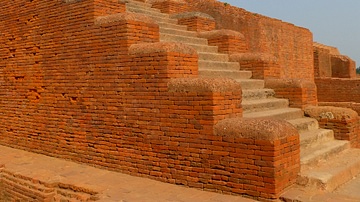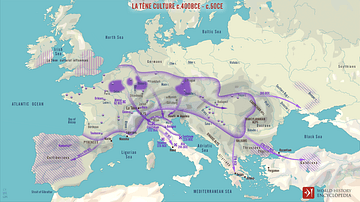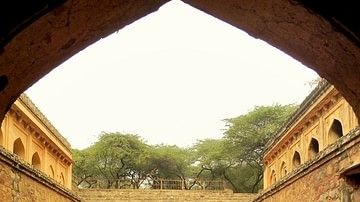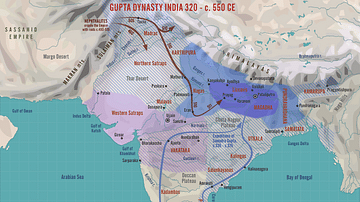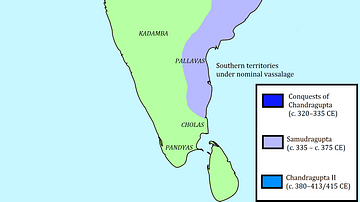Illustration
The Iron Pillar now seen at the Qutb Complex, New Delhi, India, was originally erected during the time of King Chandra and bears his inscription in Sanskrit. This king has been identified with Emperor Chandragupta II (c. 375 - 413/14 CE) of the Gupta dynasty.
The Pillar is famous for its non-rusted state, despite being made of 99% iron, and having been constructed in the 5th century CE, and thus having an existence of around 1600 years. It is believed to have had the emblem of the mythical bird Garuda, the symbol of the Guptas, at the top, but is now missing. The fluted bell capital is characteristic of the Gupta architecture. The total length of the pillar is 7.2 metres, of which 93 cm is buried underground.
The pillar is believed to have been brought from somewhere else by a king of Delhi in the late ancient or early medieval period.
Cite This Work
APA Style
pawan.kamrani, . (2019, November 01). Mehrauli Iron Pillar. World History Encyclopedia. Retrieved from https://www.worldhistory.org/image/11429/mehrauli-iron-pillar/
Chicago Style
pawan.kamrani, . "Mehrauli Iron Pillar." World History Encyclopedia. Last modified November 01, 2019. https://www.worldhistory.org/image/11429/mehrauli-iron-pillar/.
MLA Style
pawan.kamrani, . "Mehrauli Iron Pillar." World History Encyclopedia. World History Encyclopedia, 01 Nov 2019. Web. 19 Apr 2024.


